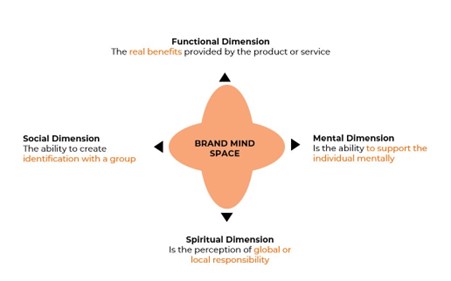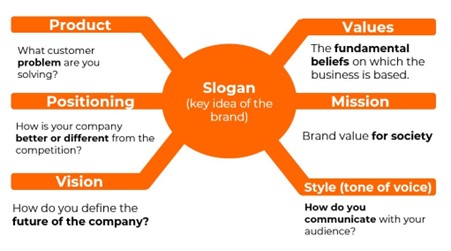
Defining a powerful methodology for building a brand for your startup that resonates
Zubr Capital is a private equity firm focused on investments in fast-growing private companies with high potential value in international markets. As the Brand Manager, Darya Ksianzova's role involves nurturing the Zubr Capital brand and developing the brands of the fund's portfolio companies. Her primary focus is on establishing sustainable processes to develop and strengthen these brands. It's well-known that companies with strong brands are valued more highly.
You would be amazed at how many prospective clients, investments, and teams that have never taken the time to develop a strong brand. Even in cases where the product needs a lot of development and work, the power of a brand that gets into the minds and hearts of a target audience makes all the difference in the world (not to mention the bottom lines).
In this article, we will explore some helpful branding methodologies using Darya's insights to ensure your brand identity truly stands out and encapsulates the heart and soul of your company, product line, and services.
Quick review of a brand
A good portion of understanding brand-building methods is first to review the nature of a brand. Being able to differentiate between a simple branded logo and the very DNA that represents the unique identity of a company while focusing on an emotional connection with target audiences is crucial to success.
Your goal is to develop a promise through the quality, innovative features, and reliance of your product or brand that turns into a consistent perception of value over time. You can see this value in brands like Apple, Walt Disney, Volvo, and other high-level companies that immediately conjure emotions and perceptions when mentioned.
The trick is finding ways to develop these brands using tried and true methodologies.
Methodology of building a brand
The “tried and true” methods Zubr uses most often is a system proposed by Swedish economist and marketer Thomas Gad. This branding strategy is utilised in popular companies like Microsoft, Nokia, P&G, and many others. Gad is the founder of the 4D Branding concept.
According to this methodology, two key elements exist to develop a brand. The first is Brand Mind Space, and the second is the Brand Code.
Building with the brand mind space

Think of this as the many dimensions of branding that should capture mental space in consumers.
You would connect the 4 dimensions (4D Branding) with consumers through their needs. You could even associate these with the famous philosopher Maslow and his Hierarchy of Needs. Those dimensions include:
• Functional dimension: actual benefits offered by the product or service
• Social dimension: associating your brand with an identity within a group
• Mental dimension: how the product or service supports the customer mentally
• Spiritual dimension: the perception of global or local responsibility
So, if you imagine your brand is a lady, the functional dimension would be gender, age, profession, and place of work. The mental aspect would be her internal beliefs, self-esteem, and perspectives. The spiritual dimension would be how she influences the world around her, and the social dimension would be her environment and social networks (in-person and online).
Implementing the brand code

The second key element is the Brand Code. Think of this as the brand’s DNA. It covers the essential sections of a brand from 6 different points:
• Product: what problem are you solving?
• Positioning: how is your company better or different from the competition?
• Vision: how do you define the future of the company?
• Values: the beliefs on which your business is based.
• Mission: what value does your brand bring to society?
• Style: the tone of voice you use to communicate with your audience.
These concepts are more aligned with traditional business development but are no less crucial to developing a durable brand image that remains “sticky” in the minds of your target audience.
The role of a brand manager
You should engage a brand manager to implement various methodologies for your brand. This person responsible for brand development will report directly to the CEO. After a given brand session, they should finalise the brand code and communicate that platform to the rest of the company.
At the end of the day, the brand manager is the one fully responsible for all aspects of the brand development, how it is communicated, and how it will evolve.
A brand manager will walk you through three essential stages of brand creation:
• Stage 1: who is the audience of your brand (customers, suppliers, employees, investors, etc.)?
• Stage 2: what ideas are at the heart of your brand (product, positioning, vision, values, mission)?
• Stage 3: how will you talk about your brand (communication style and platforms)?
It is important to note that the product or service of your brand must answer the question of what value you bring to the customer. These are not the activities you perform but the value you bring.
Consider for a moment the daily activities of a local bank branch. Everyday activities will likely include offering entrepreneurs small business loans or a checking account for citizens. These are known as the “functions” of a business. Such activities are in contrast to providing value to clients through money-problem-solving solutions like purchasing a new apartment, receiving a payday loan, or closing a deal on a new car.
The brand manager must find a way to convey the value the brand brings to the table as an extension of function, directly influencing the emotional responses of target audiences so the brand remains “top of mind” whenever the same problem arises.
Final thoughts
Developing a strong brand is a necessary and involved step in building a long-lasting business. It is crucial to stand out in the market and gain a valuable share of consumers through brand recognition.
Darya Ksianzova’s role is to take the potential investment properties Zubr Capital considers and give them a new branding direction. Sometimes, that means taking the valuable raw materials they already have and polishing them into something recognisable. Other times, it is starting from scratch.
Whatever your approach, using the methodologies explained in this article offers entrepreneurs, business investors, and teams of all sizes an opportunity to build something that consumers and clients will associate with positive, long-lasting emotions. That is the very key to creating an influential brand people will trust.
For more startup news, check out the other articles on the website, and subscribe to the magazine for free. Listen to The Cereal Entrepreneur podcast for more interviews with entrepreneurs and big-hitters in the startup ecosystem.

